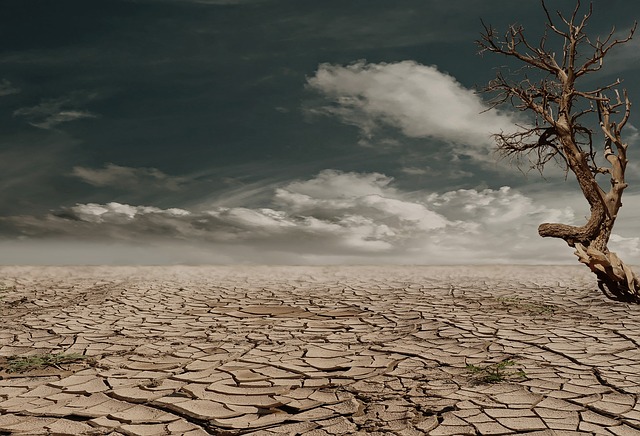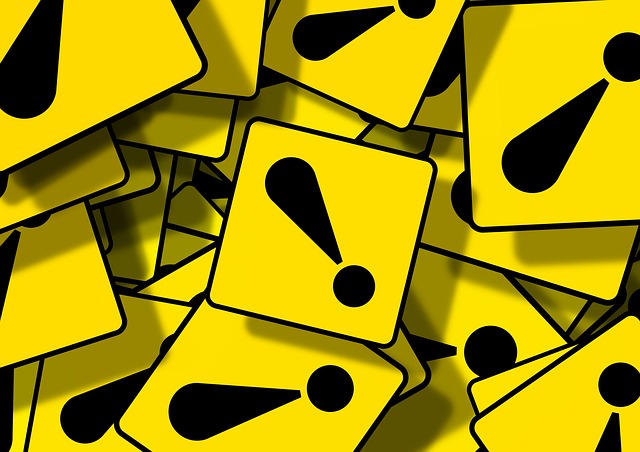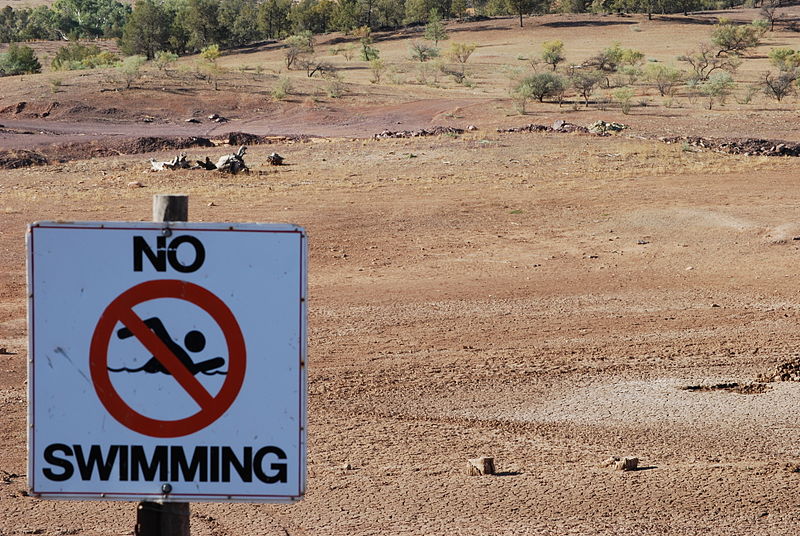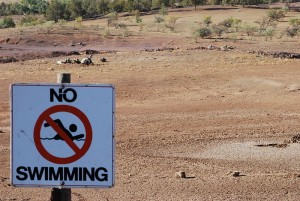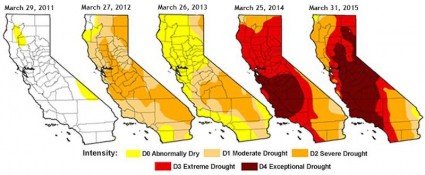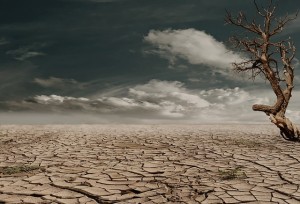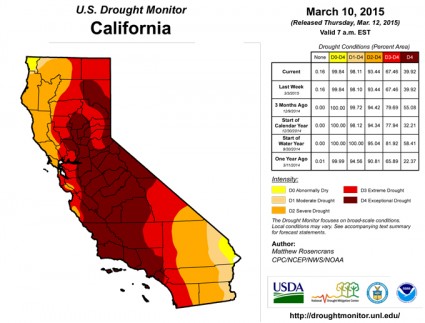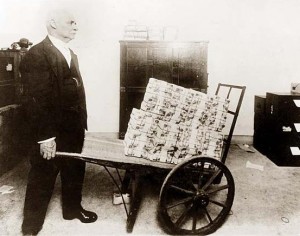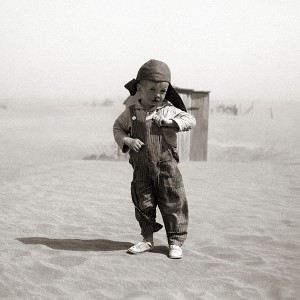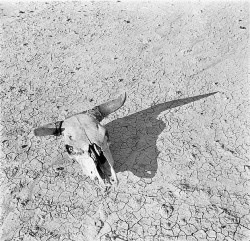 The world is rapidly running out of clean water. Some of the largest lakes and rivers on the globe are being depleted at a very frightening pace, and many of the most important underground aquifers that we depend on to irrigate our crops will soon be gone. At this point, approximately 40 percent of the entire population of the planet has little or no access to clean water, and it is being projected that by 2025 two-thirds of humanity will live in “water-stressed” areas. But most Americans are not too concerned about all of this because they assume that North America has more fresh water than anyone else does. And actually they would be right about that, but the truth is that even North America is rapidly running out of water and it is going to change all of our lives. Today, the most important underground water source in America, the Ogallala Aquifer, is rapidly running dry. The most important lake in the western United States, Lake Mead, is rapidly running dry. The most important river in the western United States, the Colorado River, is rapidly running dry. Putting our heads in the sand and pretending that we are not on the verge of an absolutely horrific water crisis is not going to make it go away. Without water, you cannot grow crops, you cannot raise livestock and you cannot support modern cities. As this global water crisis gets worse, it is going to affect every single man, woman and child on the planet. I encourage you to keep reading and learn more.
The world is rapidly running out of clean water. Some of the largest lakes and rivers on the globe are being depleted at a very frightening pace, and many of the most important underground aquifers that we depend on to irrigate our crops will soon be gone. At this point, approximately 40 percent of the entire population of the planet has little or no access to clean water, and it is being projected that by 2025 two-thirds of humanity will live in “water-stressed” areas. But most Americans are not too concerned about all of this because they assume that North America has more fresh water than anyone else does. And actually they would be right about that, but the truth is that even North America is rapidly running out of water and it is going to change all of our lives. Today, the most important underground water source in America, the Ogallala Aquifer, is rapidly running dry. The most important lake in the western United States, Lake Mead, is rapidly running dry. The most important river in the western United States, the Colorado River, is rapidly running dry. Putting our heads in the sand and pretending that we are not on the verge of an absolutely horrific water crisis is not going to make it go away. Without water, you cannot grow crops, you cannot raise livestock and you cannot support modern cities. As this global water crisis gets worse, it is going to affect every single man, woman and child on the planet. I encourage you to keep reading and learn more.
The U.S. intelligence community understands what is happening. According to one shocking government report that was released last year, the global need for water will exceed the global supply of water by 40 percent by the year 2030…
This sobering message emerges from the first U.S. Intelligence Community Assessment of Global Water Security. The document predicts that by 2030 humanity’s “annual global water requirements” will exceed “current sustainable water supplies” by forty percent.
Oh, but our scientists will find a solution to our problems long before then, won’t they?
But what if they don’t?
Most Americans tend to think of a “water crisis” as something that happens in very dry places such as Africa or the Middle East, but the truth is that almost the entire western half of the United States is historically a very dry place. The western U.S. has been hit very hard by drought in recent years, and many communities are on the verge of having to make some very hard decisions. For example, just look at what is happening to Lake Mead. Scientists are projecting that Lake Mead has a 50 percent chance of running dry by the year 2025. If that happens, it will mean the end of Las Vegas as we know it. But the problems will not be limited just to Las Vegas. The truth is that if Lake Mead runs dry, it will be a major disaster for that entire region of the country. This was explained in a recent article by Alex Daley…
Way before people run out of drinking water, something else happens: When Lake Mead falls below 1,050 feet, the Hoover Dam’s turbines shut down – less than four years from now, if the current trend holds – and in Vegas the lights start going out.
Ominously, these water woes are not confined to Las Vegas. Under contracts signed by President Obama in December 2011, Nevada gets only 23.37% of the electricity generated by the Hoover Dam. The other top recipients: Metropolitan Water District of Southern California (28.53%); state of Arizona (18.95%); city of Los Angeles (15.42%); and Southern California Edison (5.54%).
You can always build more power plants, but you can’t build more rivers, and the mighty Colorado carries the lifeblood of the Southwest. It services the water needs of an area the size of France, in which live 40 million people. In its natural state, the river poured 15.7 million acre-feet of water into the Gulf of California each year. Today, twelve years of drought have reduced the flow to about 12 million acre-feet, and human demand siphons off every bit of it; at its mouth, the riverbed is nothing but dust.
Nor is the decline in the water supply important only to the citizens of Las Vegas, Phoenix, and Los Angeles. It’s critical to the whole country. The Colorado is the sole source of water for southeastern California’s Imperial Valley, which has been made into one of the most productive agricultural areas in the US despite receiving an average of three inches of rain per year.
Are you starting to get an idea of just how serious this all is?
But it is not just our lakes and our rivers that are going dry.
We are also depleting our groundwater at a very frightening pace as a recent Science Daily article discussed…
Three results of the new study are particularly striking: First, during the most recent drought in California’s Central Valley, from 2006 to 2009, farmers in the south depleted enough groundwater to fill the nation’s largest human-made reservoir, Lake Mead near Las Vegas — a level of groundwater depletion that is unsustainable at current recharge rates.
Second, a third of the groundwater depletion in the High Plains occurs in just 4% of the land area. And third, the researchers project that if current trends continue some parts of the southern High Plains that currently support irrigated agriculture, mostly in the Texas Panhandle and western Kansas, will be unable to do so within a few decades.
In the United States we have massive underground aquifers that have allowed our nation to be the breadbasket of the world. But once the water from those aquifers is gone, it is gone for good. That is why what is happening to the Ogallala Aquifer is so alarming. The Ogallala Aquifer is one of the largest sources of fresh water in the world, and U.S. farmers use water from it to irrigate more than 15 million acres of crops each year. The Ogallala Aquifer covers more than 100,000 square miles and it sits underneath the states of Texas, New Mexico, Oklahoma, Colorado, Kansas, Nebraska, Wyoming and South Dakota. Most Americans have never even heard of it, but it is absolutely crucial to our way of life. Sadly, it is being drained at a rate that is almost unimaginable.
The following are some facts about the Ogallala Aquifer and the growing water crisis that we are facing in the United States. A number of these facts were taken from one of my previous articles. I think that you will agree that many of these facts are quite alarming…
1. The Ogallala Aquifer is being drained at a rate of approximately 800 gallons per minute.
2. According to the U.S. Geological Survey, “a volume equivalent to two-thirds of the water in Lake Erie” has been permanently drained from the Ogallala Aquifer since 1940.
3. Decades ago, the Ogallala Aquifer had an average depth of approximately 240 feet, but today the average depth is just 80 feet. In some areas of Texas, the water is gone completely.
4. Scientists are warning that nothing can be done to stop the depletion of the Ogallala Aquifer. The ominous words of David Brauer of the Ogallala Research Service should alarm us all…
“Our goal now is to engineer a soft landing. That’s all we can do.”
5. According to a recent National Geographic article, the average depletion rate of the Ogallala Aquifer is picking up speed….
Even more worrisome, the draining of the High Plains water account has picked up speed. The average annual depletion rate between 2000 and 2007 was more than twice that during the previous fifty years. The depletion is most severe in the southern portion of the aquifer, especially in Texas, where the water table beneath sizeable areas has dropped 100-150 feet; in smaller pockets, it has dropped more than 150 feet.
6. According to the U.S. National Academy of Sciences, the U.S. interior west is now the driest that it has been in 500 years.
7. Wildfires have burned millions of acres of vegetation in the central part of the United States in recent years. For example, wildfires burned an astounding 3.6 million acres in the state of Texas alone during 2011. This helps set the stage for huge dust storms in the future.
8. Unfortunately, scientists tell us that it would be normal for extremely dry conditions to persist in parts of western North America for decades. The following is from an article in the Vancouver Sun…
But University of Regina paleoclimatologist Jeannine-Marie St. Jacques says that decade-long drought is nowhere near as bad as it can get.
St. Jacques and her colleagues have been studying tree ring data and, at the American Association for the Advancement of Science conference in Vancouver over the weekend, she explained the reality of droughts.
“What we’re seeing in the climate records is these megadroughts, and they don’t last a decade—they last 20 years, 30 years, maybe 60 years, and they’ll be semi-continental in expanse,” she told the Regina Leader-Post by phone from Vancouver.
“So it’s like what we saw in the Dirty Thirties, but imagine the Dirty Thirties going on for 30 years. That’s what scares those of us who are in the community studying this data pool.”
9. Experts tell us that U.S. water bills are likely to soar in the coming years. It is being projected that repairing and expanding our decaying drinking water infrastructure will cost more than one trillion dollars over the next 25 years, and as a result our water bills will likely approximately triple over that time period.
10. Right now, the United States uses approximately 148 trillion gallons of fresh water a year, and there is no way that is sustainable in the long run.
11. According to a U.S. government report, 36 states are already facing water shortages or will be facing water shortages within the next few years.
12. Lake Mead supplies about 85 percent of the water to Las Vegas, and since 1998 the level of water in Lake Mead has dropped by about 5.6 trillion gallons.
13. It has been estimated that the state of California only has a 20 year supply of fresh water left.
14. It has been estimated that the state of New Mexico only has a 10 year supply of fresh water left.
15. Approximately 40 percent of all rivers in the United States and approximately 46 percent of all lakes in the United States have become so polluted that they are are no longer fit for human use.
The 1,450 mile long Colorado River is a good example of what we have done to our precious water supplies. It is probably the most important body of water in the southwestern United States, and it is rapidly dying.
The following is an excerpt from an outstanding article by Jonathan Waterman about how the once mighty Colorado River is rapidly drying up…
Fifty miles from the sea, 1.5 miles south of the Mexican border, I saw a river evaporate into a scum of phosphates and discarded water bottles. This dirty water sent me home with feet so badly infected that I couldn’t walk for a week. And a delta once renowned for its wildlife and wetlands is now all but part of the surrounding and parched Sonoran Desert. According to Mexican scientists whom I met with, the river has not flowed to the sea since 1998. If the Endangered Species Act had any teeth in Mexico, we might have a chance to save the giant sea bass (totoaba), clams, the Sea of Cortez shrimp fishery that depends upon freshwater returns, and dozens of bird species.
So let this stand as an open invitation to the former Secretary of the Interior and all water buffalos who insist upon telling us that there is no scarcity of water here or in the Mexican Delta. Leave the sprinklered green lawns outside the Aspen conferences, come with me, and I’ll show you a Colorado River running dry from its headwaters to the sea. It is polluted and compromised by industry and agriculture. It is overallocated, drought stricken, and soon to suffer greatly from population growth. If other leaders in our administration continue the whitewash, the scarcity of knowledge and lack of conservation measures will cripple a western civilization built upon water.
But of course North America is in far better shape when it comes to fresh water than the rest of the world is.
In fact, in many areas of the world today water has already become the most important issue.
The following are some incredible facts about the global water crisis that is getting even worse with each passing day…
1. Total global water use has quadrupled over the past 100 years, and it is now increasing faster than it ever has been before.
2. Today, there are 1.6 billion people that live in areas of the globe that are considered to be “water-stressed”, and it is being projected that two-thirds of the entire population of the globe will be experiencing “water-stressed” conditions by the year 2025.
3. According to USAID, one-third of the people on earth will be facing “severe” or “chronic” water shortages by the year 2025.
4. Once upon a time, the Aral Sea was the 4th largest freshwater lake in the entire world. At this point, it less than 10 percent the size that it used to be, and it is being projected that it will dry up completely by the year 2020.
5. If you can believe it, the flow of water along the Jordan River is down to only 2 percent of its historic rate.
6. It is being projected that the demand for water in China will exceed the supply by 25 percent by the year 2030.
7. According to the United Nations, the world is going to need at least 30 percent more fresh water by the year 2030.
8. Sadly, it is estimated that approximately 40 percent of the children living in Africa and India have had their growth stunted due to unclean water and malnutrition.
9. Of the 60 million people added to the cities of the world each year, the vast majority of them live in deeply impoverished areas that have no sanitation facilities whatsoever.
10. It has been estimated that 75 percent of all surface water in India has been heavily contaminated by human or agricultural waste.
11. Sadly, according to one UN study on sanitation, far more people in India have access to a cell phone than to a toilet.
12. Every 8 seconds, somewhere in the world a child dies from drinking dirty water.
13. Due to a lack of water, Saudi Arabia has given up on trying to grow wheat and will be 100 percent dependent on wheat imports by the year 2016.
14. Each year in northern China, the water table drops by an average of about one meter due to severe drought and overpumping, and the size of the desert increases by an area equivalent to the state of Rhode Island.
15. In China, 80 percent of the major rivers have become so horribly polluted that they do not support any aquatic life at all at this point.
So is there any hope that the coming global water crisis can be averted?
If not, what can we do to prepare?
Please feel free to post a comment with your thoughts below…
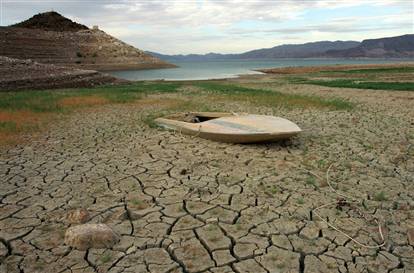
 As if anyone actually needed another reason to move out of the crazy state of California, now it is being reported that conditions in some areas of the state “are like a third-world country” due to the multi-year megadrought that has hit the state. In one California county alone, more than 1,000 wells have gone dry as the groundwater has disappeared. The state is turning back into a desert, and an increasing number of homes no longer have any water coming out of their taps or showerheads. So if you weren’t scared away by the wildfires, mudslides, high taxes, crime, gang violence, traffic, insane political correctness, the nightmarish business environment or the constant threat of “the big one” reducing your home to a pile of rubble, perhaps the fact that much of the state could soon be facing Dust Bowl conditions may finally convince you to pack up and leave. And if you do decide to go, you won’t be alone. Millions of Californians have fled the state in recent years, and this water crisis could soon spark the greatest migration out of the state that we have ever seen.
As if anyone actually needed another reason to move out of the crazy state of California, now it is being reported that conditions in some areas of the state “are like a third-world country” due to the multi-year megadrought that has hit the state. In one California county alone, more than 1,000 wells have gone dry as the groundwater has disappeared. The state is turning back into a desert, and an increasing number of homes no longer have any water coming out of their taps or showerheads. So if you weren’t scared away by the wildfires, mudslides, high taxes, crime, gang violence, traffic, insane political correctness, the nightmarish business environment or the constant threat of “the big one” reducing your home to a pile of rubble, perhaps the fact that much of the state could soon be facing Dust Bowl conditions may finally convince you to pack up and leave. And if you do decide to go, you won’t be alone. Millions of Californians have fled the state in recent years, and this water crisis could soon spark the greatest migration out of the state that we have ever seen.